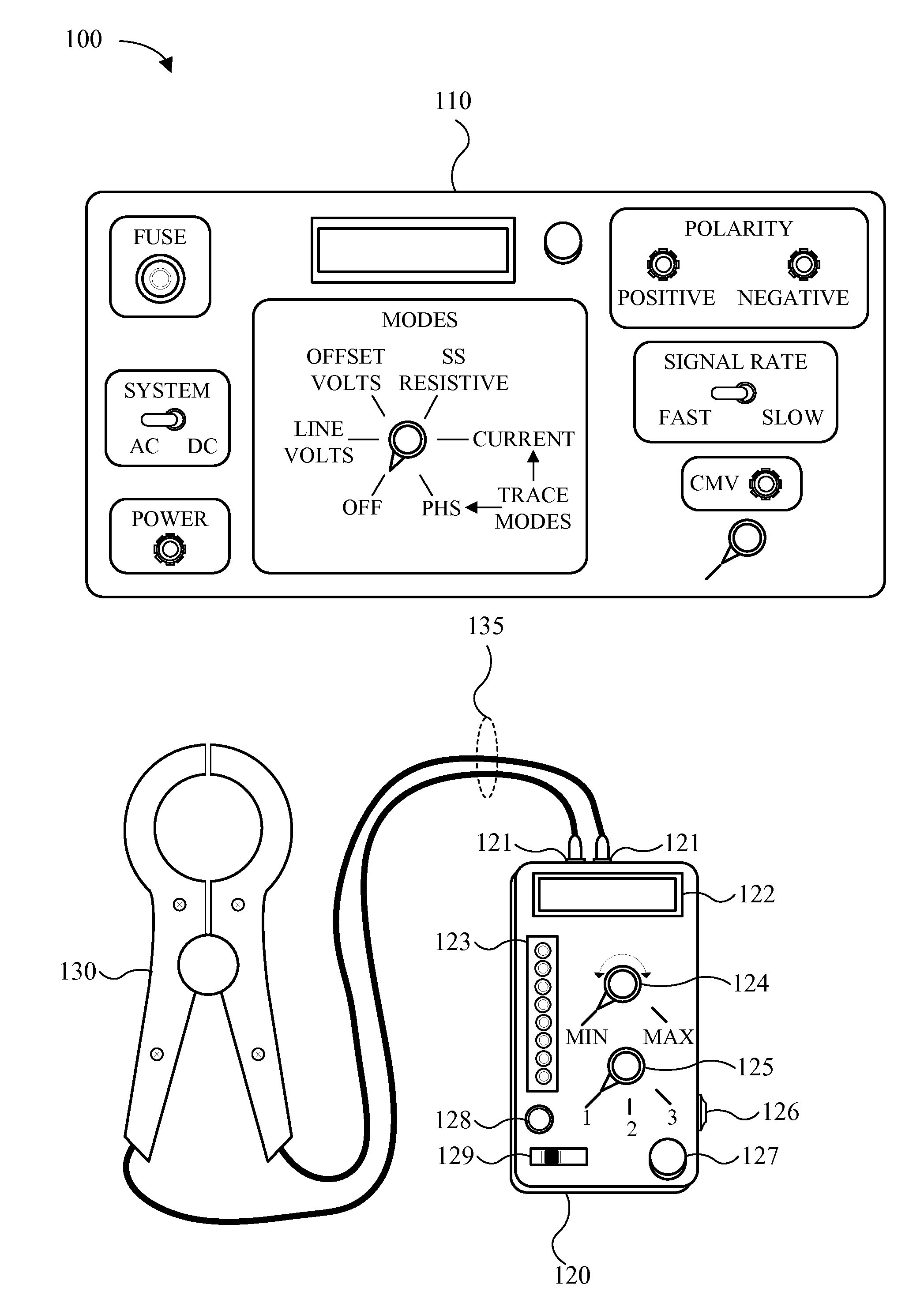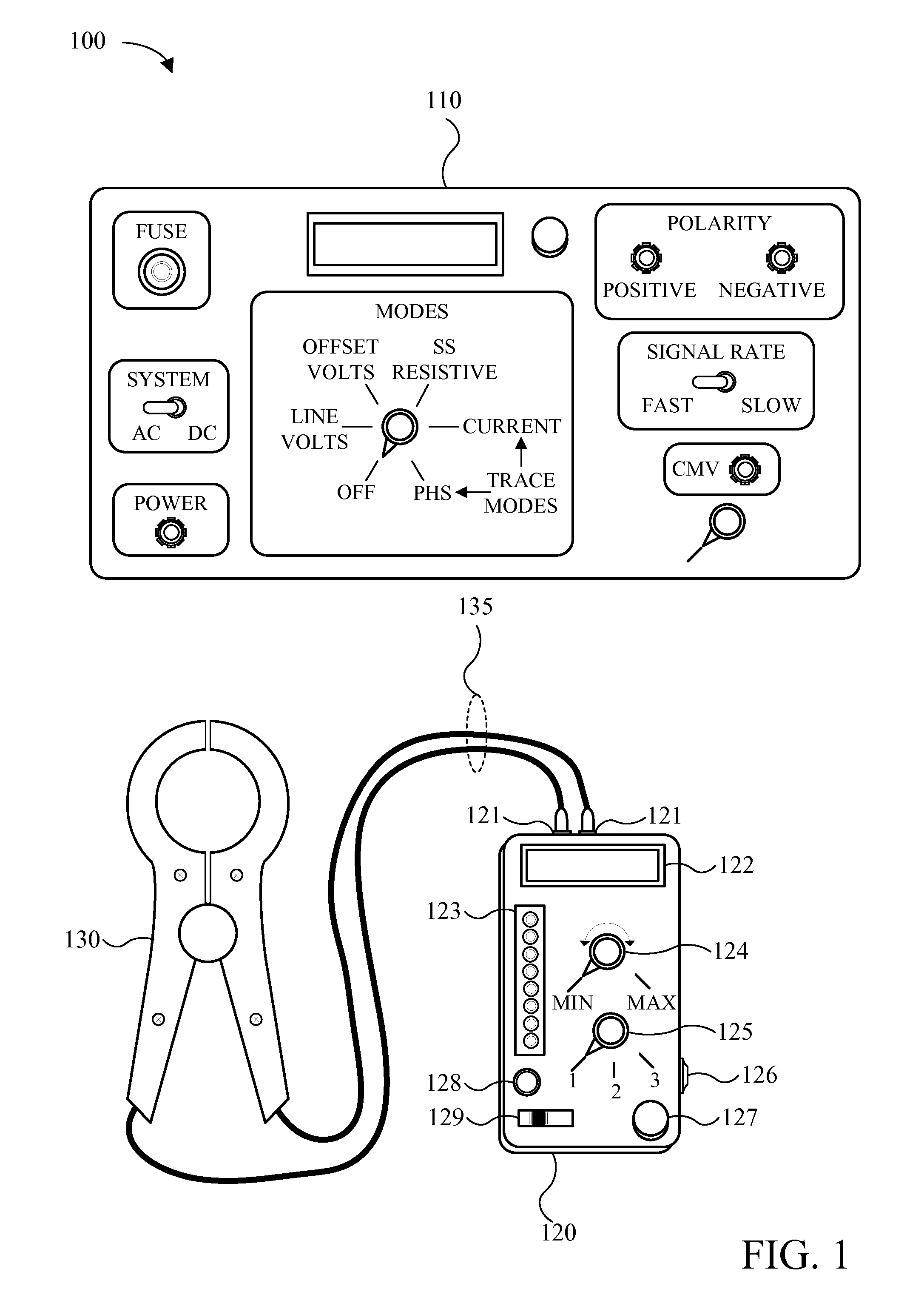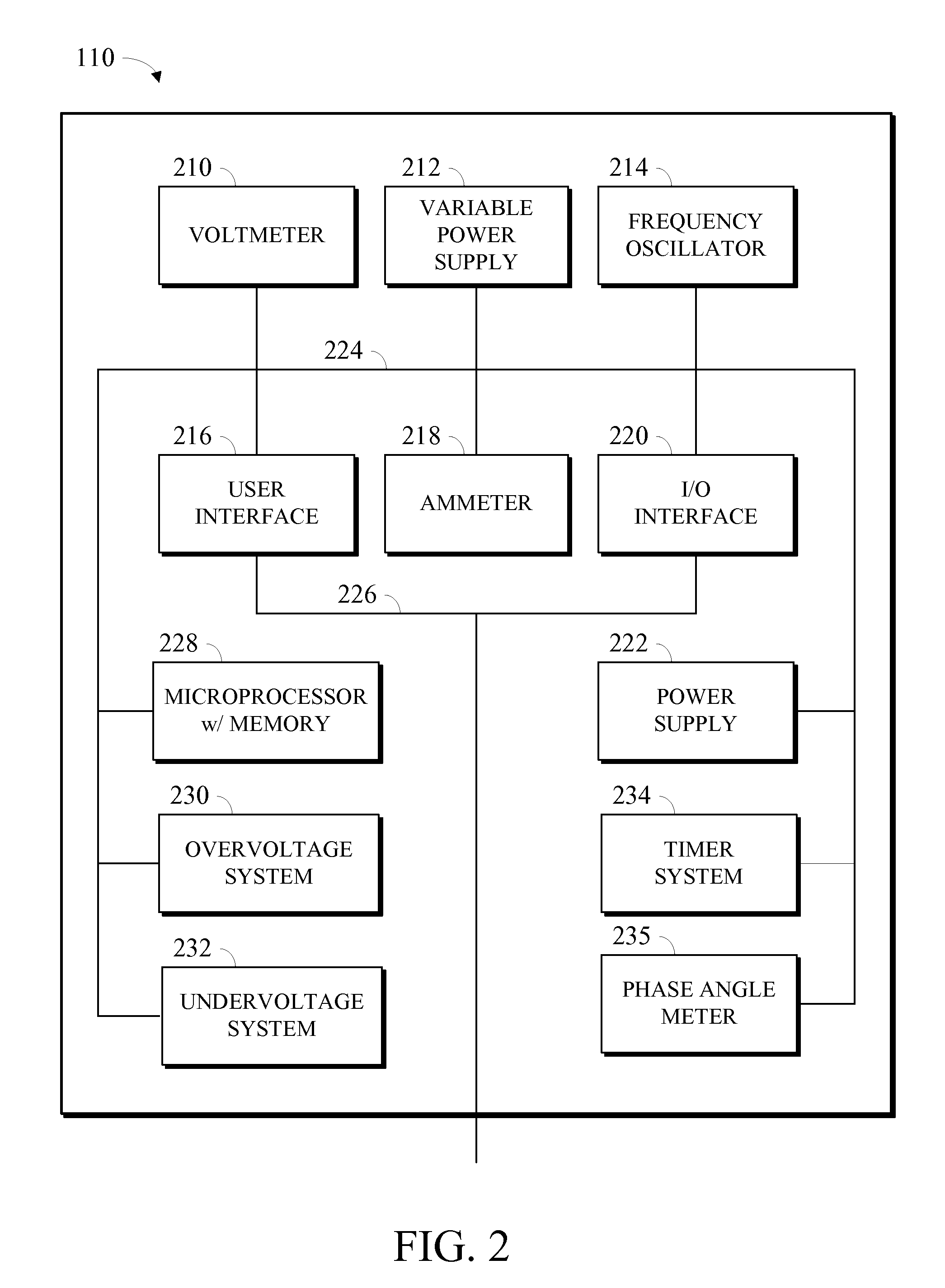Apparatus and method for ground fault detection and location in electrical systems
a technology for electrical systems and apparatuses, applied in short-circuit testing, emergency protective arrangements for limiting excess voltage/current, instruments, etc., can solve problems such as circuit board failure, unintentional grounding, and major failures of electric equipment, and achieve rapid and efficient repair and recovery practices.
- Summary
- Abstract
- Description
- Claims
- Application Information
AI Technical Summary
Benefits of technology
Problems solved by technology
Method used
Image
Examples
Embodiment Construction
[0033]The apparatus and methods of the most preferred embodiments of the present invention are configured to combine ground fault detection principles, ground fault location principles, circuit isolation principles, and current transformer principles to systematically detect and locate the source of a ground fault on an ungrounded electrical distribution system. The various preferred embodiments of the present invention provide for enhanced ground fault detection, monitoring, and evaluating methods using a permanently mounted detector relay and a separate detection / location device that can be deployed as a portable ground fault detection and location system or as a permanently or semi-permanently mounted ground fault detection and location system.
[0034]In addition, it should be noted that the terms “electrical system,” electrical distribution system” and “system” may be used herein to refer to practically any ungrounded electrical system, including ungrounded alternating current (AC...
PUM
 Login to View More
Login to View More Abstract
Description
Claims
Application Information
 Login to View More
Login to View More - R&D
- Intellectual Property
- Life Sciences
- Materials
- Tech Scout
- Unparalleled Data Quality
- Higher Quality Content
- 60% Fewer Hallucinations
Browse by: Latest US Patents, China's latest patents, Technical Efficacy Thesaurus, Application Domain, Technology Topic, Popular Technical Reports.
© 2025 PatSnap. All rights reserved.Legal|Privacy policy|Modern Slavery Act Transparency Statement|Sitemap|About US| Contact US: help@patsnap.com



